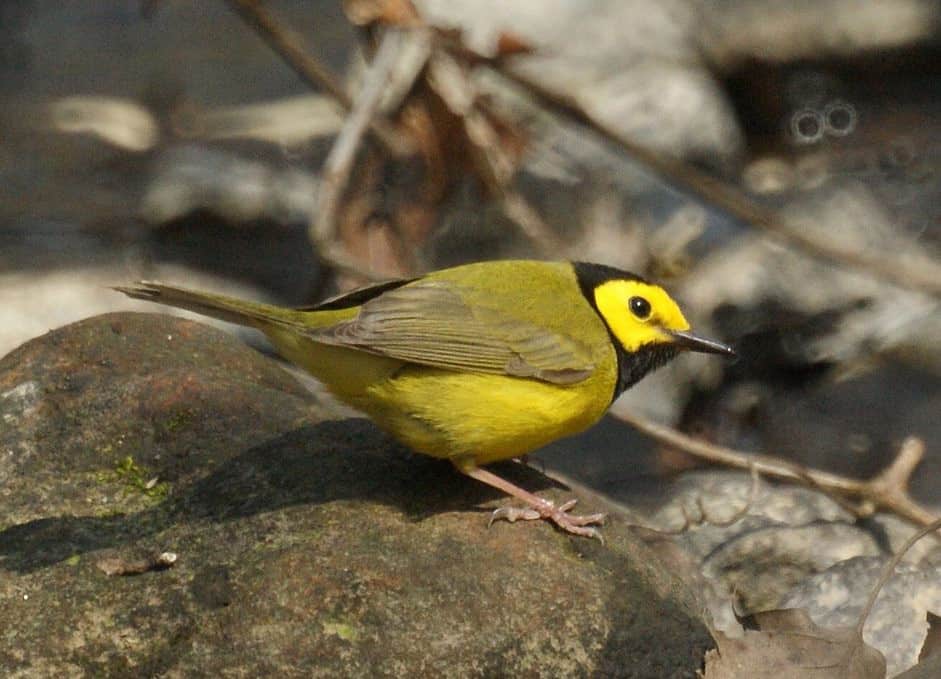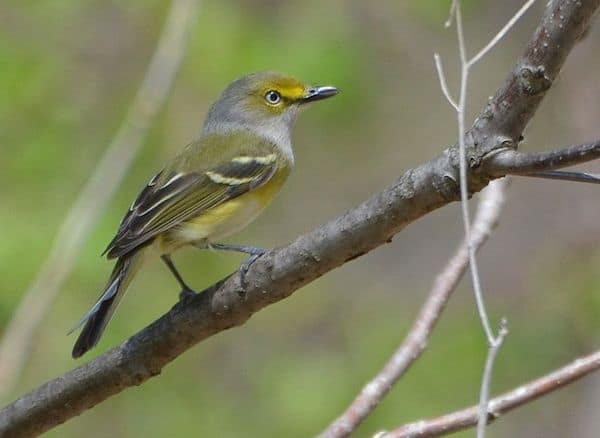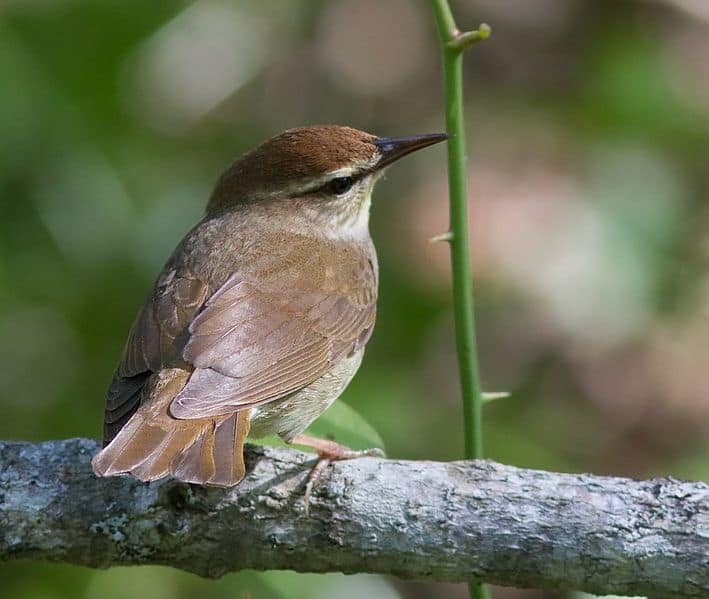Summer Birds of Alabama (June, July, August)
Summers are hot in Alabama, but the breeding season continues, particularly for species such as northern cardinal and Carolina wren that have multiple broods. American goldfinches time their breeding to coincide with ripening thistle, which occurs in late June or early July. Summer in Alabama is much about juvenile birds and fledglings. Young northern cardinals, with their black bills and disheveled plumage, are everywhere. Cattle egrets congregate in fields, feasting on the insects stirred up by the feeding cattle. Juvenile little blue herons in their white plumage spread out thinly around the lower half of the state. Birds again become quiet, and thus harder to locate, as their energies are directed toward feeding and raising a brood.
The gulf coast has thousands of breeding shorebirds and seabirds, including herons, egrets, terns (including the endangered least tern), and brown pelicans, which have come back from the brink of extinction to be quite numerous. Many of these birds go to isolated islands offshore to breed away from humans, and perhaps more important, away from predators such as raccoons, snakes, and opossums, and only reappear after nesting is complete. Magnificent frigatebirds are not common, but the observant birder may find these huge birds along the coast, most often from Dauphin Island, all summer and well into fall.
Alabama is blessed with well over a dozen warblers that nest in the state and that are fairly easy to find in the proper habitat. Among them are American redstart, yellow-throated, yellow (northern third), pine, prairie, black-and-white, prothonotary, worm-eating, ovenbird (northern third), Louisiana waterthrush, Kentucky, common yellowthroat, hooded, and northern parula warblers, and yellow-breasted chat. The cerulean warbler once bred over much of the state, but now breeds in only one or two isolated spots. Additionally, Acadian flycatcher and eastern wood-pewee are regular breeders and will perch conspicuously in trees, although they are more often located by their songs.
By early summer, swallow-tailed kites can be seen soaring with their fledglings as far north as Montgomery on the Alabama River, and Demopolis along the Tombigbee River. Mississippi kites can also be seen performing aerial acrobatics above the Coastal Plain and gulf coast. Broad-winged hawks, while sometimes elusive, breed along edges of wooded areas. Wood storks spread out into the Coastal Plain and move with the often dwindling water supply. As a shallow water hole or seasonal wetland begins to dry up, storks congregate to sweep the muddy shallows for buried critters and harvest the fish hemmed in by the shrinking shoreline. When the water is gone, the storks move on. On especially wet or dry years, the storks may be less plentiful as they look for better foraging elsewhere.
Beginning in late spring through late fall, the anhinga, also known as the “snake bird” or “water turkey,” is often seen below the fall line sunning itself on a swamp snag. Easily mistaken for a cormorant, which is also black and suns with wings outspread, it can be readily identified by its needle-sharp bill, with which it spears fish, and by its habitat, which is swamps and wooded ponds. The anhinga will submerge itself until only part of its neck and its head are above water, and then swim, leaving a wake behind, hence the nickname snake bird. To see one, scan swamps and woody ponds for a big black bird sunning or fishing. They are conspicuous while sunning but harder to locate when perched with wings folded, and even harder in the water, except for the telltale wake.
Summer tanagers breed in Alabama in large numbers, and can be seen in woods, parks, and yards with large trees. Great crested flycatchers are noisy much of summer as they tend their young in snakeskin-adorned nests. The western half of central Alabama is host to a small number of breeding lark sparrows, so watch for them in open farmland and along less-traveled roadsides.
Except for raptors such as kites, most productive summer birding is over by mid-morning as the heat forces the birds—and the birders—to take it easy until late afternoon, when they again forage before roosting. There are exceptions, of course. Chimney swifts twitter overhead as they fly many miles every day, and belted kingfishers patrol almost any water larger than a mud puddle. Most swallows do not take a summer siesta either.
By late summer, Alabama experiences a modest to good shorebird migration that occasionally turns up a rarity. Solitary, buff-bellied, upland, semipalmated, least, western, spotted, stilt, and pectoral sandpipers, greater and lesser yellowlegs, and black-bellied, semipalmated, piping, and modest numbers of American golden plovers wend their way southward through the state. They can turn up at any shallow water, even large puddles after a rain. Blue-winged teal and pied-billed grebes also begin returning in good numbers. Long- and short-billed dowitchers begin arriving late in summer, particularly on the coast.




